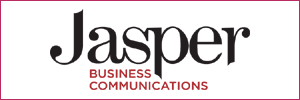Moisture control is an essential consideration in modern construction, directly impacting the longevity, safety, and energy efficiency of a building. Without proper moisture management, construction projects are at risk of water damage, material degradation, mould growth, and structural instability. Whether the project involves residential buildings, commercial developments, or large-scale infrastructure, effective moisture control strategies are crucial to maintaining the structural integrity and overall performance of the building.
 Water can enter a building through many avenues: rainwater, groundwater, and even internal sources like condensation or plumbing leaks. As a result, modern construction projects must implement comprehensive moisture control solutions that address all potential vulnerabilities. In this blog, we’ll explore the most effective strategies and materials used in moisture control today and highlight how Visqueen products offer robust protection against water ingress.
Water can enter a building through many avenues: rainwater, groundwater, and even internal sources like condensation or plumbing leaks. As a result, modern construction projects must implement comprehensive moisture control solutions that address all potential vulnerabilities. In this blog, we’ll explore the most effective strategies and materials used in moisture control today and highlight how Visqueen products offer robust protection against water ingress.
1. Understanding the Risks of Poor Moisture Control
Before delving into moisture control solutions, it’s important to understand the risks posed by unchecked moisture in construction. Water is one of the most destructive forces in a building’s lifecycle, and if it’s allowed to infiltrate the structure, it can lead to several issues:
- Structural damage: Moisture can weaken the integrity of building materials such as concrete, wood, and steel. Over time, water ingress can lead to cracks, rotting, rusting, and overall degradation of the structure.
- Mould and mildew growth: Damp environments are breeding grounds for mould, which not only damages building materials but also presents significant health risks for occupants.
- Compromised insulation: Waterlogged insulation loses its effectiveness, reducing energy efficiency and increasing heating and cooling costs.
- Deteriorated indoor air quality: Mould, mildew, and dampness can compromise the air quality inside a building, leading to respiratory issues and discomfort for inhabitants.
Given these risks, addressing moisture control from the outset of construction projects is essential for ensuring durability and safety.
2. Key Areas for Moisture Control in Construction
Moisture can affect multiple areas of a building, from the foundation to the roof. Each area requires specific solutions to ensure that water ingress is prevented or managed effectively. The following are key areas where moisture control is essential:
Foundations and Basements
Foundations and basements are particularly vulnerable to groundwater and rising damp. Since these areas are typically below ground level, they are constantly exposed to hydrostatic pressure, which can push water through the walls or floors. To protect these areas, a combination of damp-proof membranes (DPMs) and external waterproofing systems is essential.
- Damp-proof membranes are typically installed under concrete slabs and along foundation walls to prevent moisture from rising through the structure. These membranes act as barriers that stop groundwater from seeping into the building.
- External waterproofing systems, such as liquid-applied membranes or pre-formed sheets, can be used on foundation walls to provide additional protection against moisture infiltration from the surrounding soil.
Adequate drainage systems, such as French drains, can also help by diverting groundwater away from the foundation, further reducing the risk of water ingress.
Roofs and Walls
The building envelope, which includes the roof and external walls, is the first line of defence against rainwater. Properly designed and maintained roofing systems, along with suitable wall cladding, are essential for keeping water out.
- Vapour barriers: These are installed within walls and roofs to prevent moisture vapour from penetrating and condensing inside the building. Vapour barriers are essential in areas with fluctuating humidity levels, helping to control moisture migration.
- Breathable membranes: These membranes allow water vapour to escape from the building while preventing external moisture from entering. They are particularly useful in preventing condensation buildup in roof systems, helping to maintain dry, insulated spaces.
Flashing and sealants around doors, windows, and other penetrations are also critical to ensure that no gaps allow water to infiltrate the building envelope.
Floors
Floors in contact with the ground are another vulnerable area for moisture ingress. For floors in basements or on ground-level slabs, damp-proof membranes must be installed beneath the flooring materials to prevent rising damp from affecting the structure. Additionally, using water-resistant flooring materials in high-moisture areas like kitchens, bathrooms, and basements can help mitigate the risk of water damage.
3. Solutions for Preventing Condensation
Condensation is a common issue in both residential and commercial buildings, particularly in areas with high humidity or poor ventilation. It occurs when warm, humid air meets cool surfaces, such as windows or walls, leading to water droplets forming. Over time, this can lead to damp patches, mould, and material damage.
To manage condensation effectively, consider the following solutions:
- Adequate ventilation: Proper airflow is essential to preventing condensation. Mechanical ventilation systems or simply improving natural ventilation can help regulate indoor humidity levels and prevent moisture buildup.
- Insulation: By insulating walls, ceilings, and windows, you can prevent surfaces from becoming cold enough to cause condensation. Insulated surfaces remain closer to room temperature, reducing the likelihood of moisture condensing.
- Dehumidifiers: For buildings in particularly humid environments, dehumidifiers can help control moisture levels indoors by extracting excess water from the air.
4. The Role of Quality Moisture Control Products
Selecting high-quality moisture control products is key to ensuring that a construction project remains dry and durable. A reliable product will not only stop water ingress but also maintain its performance over the lifespan of the building, even in challenging environments.
Visqueen offers a range of moisture control solutions designed to provide comprehensive protection against water ingress. From damp-proof membranes to gas barriers and vapour control layers, Visqueen products are engineered to meet the specific moisture control needs of modern construction projects.
Conclusion
Moisture control is an integral part of ensuring the longevity, safety, and energy efficiency of modern construction projects. Without proper moisture management, water ingress can lead to structural damage, mould growth, and reduced insulation effectiveness, compromising both the health of the building and the comfort of its occupants.
By implementing a combination of damp-proof membranes, vapour barriers, waterproofing systems, and adequate ventilation, construction professionals can safeguard buildings from moisture-related issues. Selecting high-quality products, like those from Visqueen, ensures that these solutions provide long-lasting protection and performance.
In summary, effective moisture control is not only about preventing water from entering a building but also about managing moisture at every stage of the construction process, ensuring that the structure remains robust and resilient for years to come.


.gif?rand=8842)








